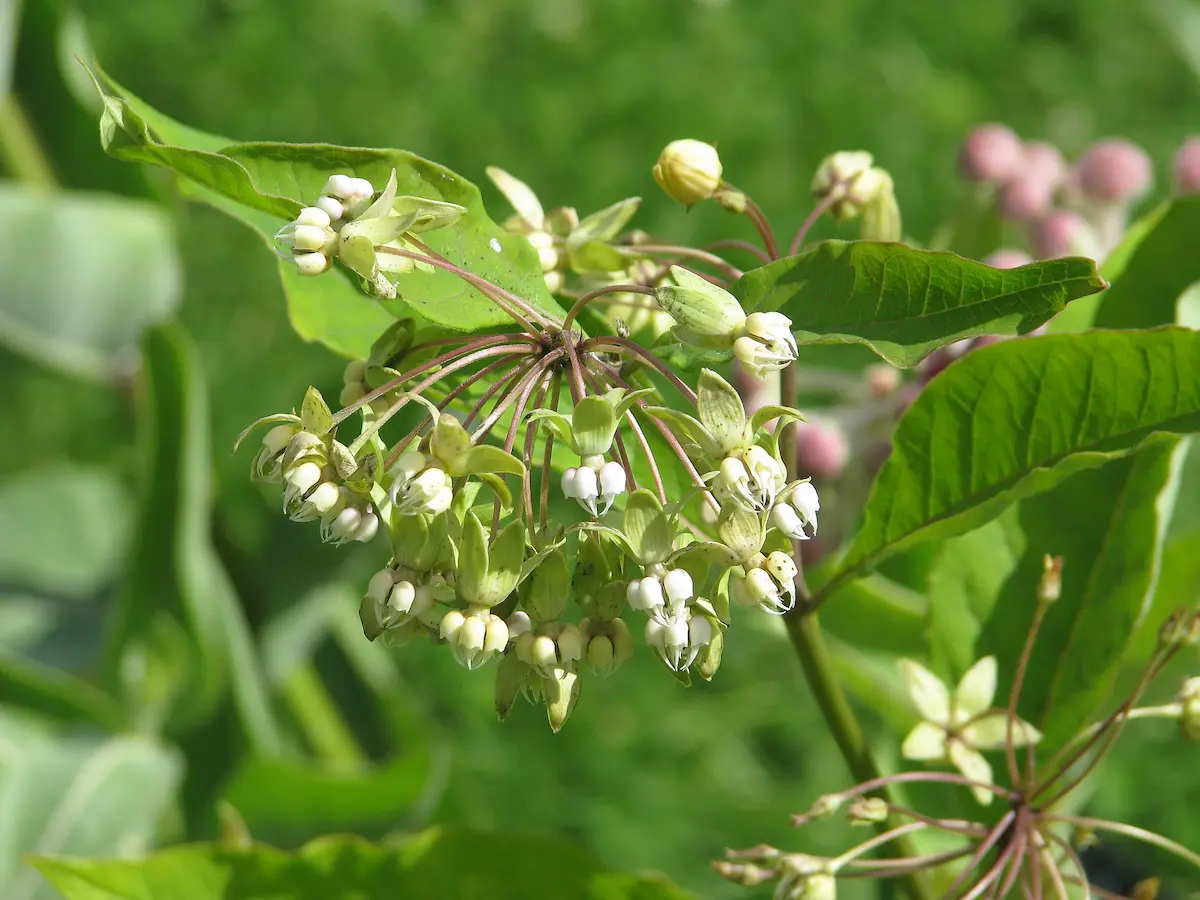Caring for Poke Milkweed

Peganum from Small Dole, England, CC BY-SA 2.0, via Wikimedia Commons
Although the milky sap is poisonous to humans, poke milkweed is an important nectar source for native bees, wasps, and other nectar-seeking insects. Unfortunately, non-native honey bees commonly get trapped in the stigmatic slits and die. Milkweeds are also the larval food source for monarch butterflies and their relatives, as well as a variety of other herbivorous insects (including numerous beetles, moths, and true bugs) specialized to feed on the plants despite their chemical defences.
Members of the genus Asclepias produce some of the most complex flowers in the plant kingdom, comparable to orchids in complexity. It has oval leaves that grow opposite on stems that can reach up to five feet, which is taller than other milkweed species.
Quick Growing Guide
Botanical Name: Asclepias exaltata
En français: Asclépiade; le laiteron
See More Plants in this Botanical Family:
Blooms:
Sun / Shade:
Water: Dry to medium
Soil:
Height:
Pollinators:
The flower heads can be fried in batter and eaten. Poke milkweed can sometimes hybridize with common milkweed when plants are close in proximity. The white fibres are commonly used by hummingbirds to build their nests. Milkweed is grown commercially as a hypoallergenic filling for pillows and as insulation for winter coats.
Where to Plant and How to use
Poke milkweed is not very common in Ontario, and has a tendency to be confused with common milkweed.
Its natural habitat: Butterfly gardens, meadows, prairies, or naturalized/native plant areas; moist woodland habitats. This plant is considered by many gardeners to be too vigorous and weedy for borders.
Canada’s milkweeds are a large round or flat cluster of late spring or summer-blooming flowers. Their petals fold backwards on the stem, and the centre of the flower is comprised of five hood-like structures, within which is a protruding ‘horn’ as well as the plant’s nectar. Their leaves and stems typically have a milky sap, hence their name, Milkweed. Once hardened, ripe milkweed seed pods open with a slit along one side to reveal many brown seeds. The seeds are attached to thin, silky white fibres that fluff up, catch the wind and carry their seeds into nearby fields.
Propagating Asclepias exaltata
Easily grown from seed, milkweed will self-seed in the landscape if seed pods are not removed prior to splitting open. Start seeds indoors after 4-6 weeks of cold moist stratification before planting in the spring. Plant 2-3 seeds in a shallow hole in the fall, cover and water once. The seedlings will emerge in spring soon after the risk of frost is over.
Caring for Poke Milkweed
Easily grown in average, dry to medium, well-drained soils in full sun. Drought tolerant. Can spread somewhat rapidly by rhizomes.
Companion plant suggestions include Verbena, Purple Salvia, Asclepias syriaca, Doellingeria umbellata.
Pruning Poke Milkweed
If you don’t want seeding to occur, simply cut off the pods before they split open or place rubber bands or twist ties around the pods to harvest the seeds.
Other
Rabbits will eat poke milkweed to the ground if plants are not protected.
Many tribes of Native Americans used this plant for various healing purposes.
